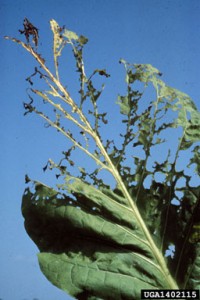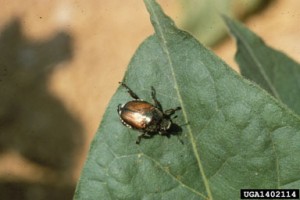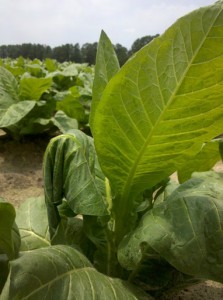Scouting for Minor Foliar Pests
go.ncsu.edu/readext?307161
en Español / em Português
El inglés es el idioma de control de esta página. En la medida en que haya algún conflicto entre la traducción al inglés y la traducción, el inglés prevalece.
Al hacer clic en el enlace de traducción se activa un servicio de traducción gratuito para convertir la página al español. Al igual que con cualquier traducción por Internet, la conversión no es sensible al contexto y puede que no traduzca el texto en su significado original. NC State Extension no garantiza la exactitud del texto traducido. Por favor, tenga en cuenta que algunas aplicaciones y/o servicios pueden no funcionar como se espera cuando se traducen.
Português
Inglês é o idioma de controle desta página. Na medida que haja algum conflito entre o texto original em Inglês e a tradução, o Inglês prevalece.
Ao clicar no link de tradução, um serviço gratuito de tradução será ativado para converter a página para o Português. Como em qualquer tradução pela internet, a conversão não é sensivel ao contexto e pode não ocorrer a tradução para o significado orginal. O serviço de Extensão da Carolina do Norte (NC State Extension) não garante a exatidão do texto traduzido. Por favor, observe que algumas funções ou serviços podem não funcionar como esperado após a tradução.
English
English is the controlling language of this page. To the extent there is any conflict between the English text and the translation, English controls.
Clicking on the translation link activates a free translation service to convert the page to Spanish. As with any Internet translation, the conversion is not context-sensitive and may not translate the text to its original meaning. NC State Extension does not guarantee the accuracy of the translated text. Please note that some applications and/or services may not function as expected when translated.
Collapse ▲Japanese beetles and stink bugs are minor pests of tobacco and rarely require treatment. It is useful to be able to identify plant injury from these two minor pests when scouting so that it is not confused with injury to more significant insect or pathogen pests.
When to scout for minor foliar pests
Japanese beetles typically become active in early July in North Carolina and may feed on tobacco during the later half of the growing season. Stink bugs may be present in early summer and are rarely an issue post topping. An increase in stink bug populations may be observed in tobacco if other preferred host crops, such as wheat, corn, or cotton, are harvested nearby.
What part of the plant to scout for minor foliar pests
Japanese beetles may be found throughout the plant but prefer to feed on upper stalk leaves. Stink bugs are also generally located on upper stalk leaves. Stink bugs feed on the stalk or midrib of leaves.
How to scout for foliar pests
Japanese beetles feeding leaves ragged holes, often moving from the edges of leaves inward. Japanese beetles feed on leaf lamina and will leave veins and midribs intact.

Japanese beetle damage with holes grouped together to form bigger, ragged holes. Photo: R.J. Reynolds Tobacco Company Slide Set, R.J. Reynolds Tobacco Company. Bugwood.org
Japanese beetle adults are an iridescent orange-brown with green legs and underbelly and white fringe around the rear of their abdomen. They feed on the upper surfaces of leaves and will drop from plants if disturbed.

A Japanese beetle on top of a leaf. Photo:vR.J. Reynolds Tobacco Company Slide Set, R.J. Reynolds Tobacco Company. Bugwood.org
Stink bugs feeding may cause leaves to wilt. Stink bugs typically only damage one leaf per plant, which helps distinguish this injury from wilting due to disease, which affects multiple leaves. Leaves will often recover from stink bug damage, but in dry conditions, they may be further damaged by sun scald.
Minor foliar pests thresholds
There are no specific thresholds for Japanese beetle or stink bugs. In the rare situation where injury from these minor pests is similar to that cause by a 10% tobacco budworm infestation, management may be justified, but only insects are still present in fields. If damage is present but no or very few insects are observed, treatments will have no benefit.



